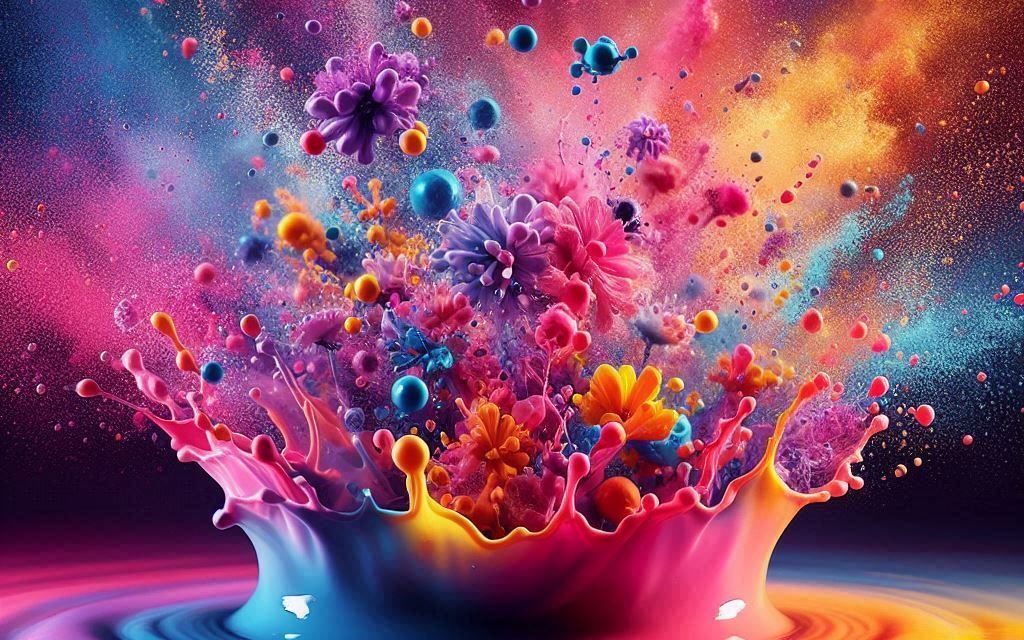Table of Contents
Demystification of reality Through Art: The Dual Role of Creating and Destroying Illusions
Demystification of Reality Through Art. Art, in its multifaceted nature, operates both as a creator of illusions and as a force that destroys them. While it is commonly perceived as a domain of fantasy and imagination, where reality is often bent to serve aesthetic or emotional purposes, art also has a profound ability to demystify reality, shatter illusions, and expose the underlying truths of social dogmas. This essay explores how art functions in these seemingly contradictory roles, elucidating its power to not only construct but also dismantle the illusions that shape human perception and societal structures.

The Creation of Illusions in Art
Art, in its most traditional sense, is often associated with the creation of illusions. This is evident in various artistic forms, from painting and sculpture to literature and cinema, where artists manipulate reality to evoke emotions, convey ideas, or transport audiences to imagined worlds. The Renaissance period, for example, is celebrated for its mastery of perspective in painting, which creates the illusion of depth on a flat surface, drawing viewers into a seemingly real but ultimately fictional space. Similarly, literature often crafts narratives that, while rooted in reality, expand into realms of fantasy, speculation, or idealization, offering readers a temporary escape from the mundane.
These illusions are not mere fabrications; they are purposeful constructs that serve to highlight certain aspects of reality while obscuring others. By bending reality, art can emphasize beauty, tragedy, or heroism, guiding audiences to experience the world through a particular lens. However, while these illusions can enrich our understanding and appreciation of the world, they can also perpetuate myths, stereotypes, and ideologies that reinforce social norms and dogmas.
The Demystification of Reality Through Art
Contrary to its role as an illusion-maker, art also possesses the capacity to demystify reality. By stripping away the layers of illusion, art can expose the underlying truths that are often concealed by social norms, ideologies, and dogmas. This demystification process is crucial in challenging the status quo and revealing the often uncomfortable realities that lie beneath the surface of society.
One of the most powerful examples of art’s demystifying role is found in the works of social realism. This movement, particularly in the 19th and early 20th centuries, sought to portray the lives of ordinary people and the harsh realities of social conditions without the embellishments or romanticism typically found in other artistic forms. The works of artists like Gustave Courbet, Honoré Daumier, and later, Diego Rivera and George Grosz, brought attention to the struggles of the working class, the injustices of the political system, and the hypocrisies of the bourgeoisie. By presenting these realities in stark, unidealized terms, these artists shattered the comforting illusions that masked the exploitation and suffering inherent in their societies.
In literature, the demystifying power of art is evident in the works of authors like George Orwell, whose dystopian novel 1984 exposes the dangers of totalitarianism, or James Baldwin, whose writings on race in America reveal the deep-seated prejudices and systemic racism that underpin society. These works do not create illusions; rather, they dismantle them, forcing readers to confront the often harsh and disturbing truths about the world they inhabit.
Art as a Catalyst for Social Change
Art’s ability to demystify reality and expose social dogmas is not merely an intellectual exercise; it has tangible implications for social change. By challenging the illusions that sustain oppressive systems, art can inspire critical thought, provoke dialogue, and ultimately, catalyze action. The demystification of reality through art often serves as a precursor to social movements, as it reveals the contradictions and injustices that demand redress.
Consider the role of art in the civil rights movement in the United States. The photography of Gordon Parks, the music of Nina Simone, and the writings of Langston Hughes all contributed to a growing awareness of the racial injustices that plagued American society. These artists did not create new illusions; they exposed the brutal reality of segregation, discrimination, and violence, challenging the narrative of equality and freedom that had long been perpetuated by the American dream. In doing so, they laid the groundwork for the social and political changes that followed.
Similarly, feminist art has played a critical role in challenging the illusions of gender roles and exposing the patriarchal structures that have historically marginalized women. The works of artists like Judy Chicago, whose Dinner Party installation celebrates the achievements of women throughout history, or the Guerrilla Girls, whose provocative posters highlight the gender disparities in the art world, have been instrumental in demystifying the cultural narratives that have kept women in subordinate positions.
The Dialectic of Illusion and Demystification
The relationship between art’s role in creating and destroying illusions can be understood as a dialectical process. Art, in creating illusions, provides a framework through which we can explore alternative realities, possibilities, and perspectives. These illusions, however, are not static; they are constantly subject to reinterpretation, critique, and deconstruction. The very act of creating an illusion invites the possibility of its destruction, as new insights and understandings emerge.
This dialectical process is evident in modern and contemporary art, where the boundaries between illusion and reality are increasingly blurred. The surrealist movement, for example, sought to transcend the conventional distinctions between reality and imagination, creating works that simultaneously evoke and challenge our perceptions of the world. Salvador Dalí’s melting clocks in The Persistence of Memory create an illusion of a dreamlike landscape while also questioning the very nature of time and reality. In this way, the creation of illusion becomes a means of demystification, as it compels viewers to question their assumptions about the world.
Similarly, conceptual art often demystifies the very nature of art itself. By challenging traditional notions of what constitutes art, artists like Marcel Duchamp, whose Fountain (a urinal signed with a pseudonym) redefined the boundaries of artistic expression, expose the arbitrary and constructed nature of artistic conventions. This, in turn, demystifies the art world, revealing it as a social construct rather than a natural or objective reality.
Conclusion
Art’s dual role as a creator and destroyer of illusions underscores its profound impact on human consciousness and society. While art has the power to construct beautiful, fantastical, and emotionally resonant illusions, it also possesses the ability to strip away these illusions, revealing the underlying truths that shape our lives and societies. In its demystifying role, art becomes a powerful tool for challenging social dogmas, exposing injustices, and fostering critical thought. Through this dialectical process of creating and destroying illusions, art not only reflects reality but also transforms it, offering new ways of seeing, understanding, and ultimately, changing the world.


No responses yet